Master kinematic joint analysis and degrees of freedom calculations through real-world robotics applications: industrial welding cells, minimally invasive surgical instruments, and adaptive agricultural grippers. Learn to apply Grübler’s equation, analyze constraint relationships, and design mechanisms across diverse engineering domains.
🎯 Learning Objectives
By the end of this lesson, you will be able to:
Classify all kinematic joint types and their constraint characteristics in 3D space Calculate degrees of freedom for spatial mechanisms using Grübler's equation Analyze constraint relationships including closure and coupling constraints Apply DoF analysis to industrial, medical, and agricultural robotics Design underactuated mechanisms with passive adaptability
🔧 Real-World Engineering Challenge: Joint Selection Across Diverse Applications
Fr om autom otive weld ing rob ots requi ring mul ti-ax is coordi nation, to surg ical instru ments constr ained by 10 mm tro car por ts, to adap tive fru it harve sters usi ng sin gle-mot or grip pers - engin eers must system atically anal yze joi nt typ es and degr ees of free dom to des ign effec tive mecha nisms. Ea ch applic ation dom ain pres ents uni que constr aints th at dire ctly imp act joi nt selec tion and sys tem mobi lity.
The Joint Analysis Challenge
Engineers across different domains face critical questions:
Engineering Question: How do we systematically analyze joint configurations to select optimal mechanisms for constrained environments, multi-robot coordination, and adaptive grasping tasks?
Click to Reveal: Why DoF Analysis Matters Consequences of Inadequate Analysis:
Motion limitations preventing required surgical maneuvers or assembly tasksOver-actuated designs wasting motors, cost, and control complexityClosure constraints causing unexpected loss of mobility in multi-robot cellsWorkspace restrictions from unaccounted external constraints (trocar ports, mounting)Inefficient grippers requiring multiple motors when one could suffice Benefits of Systematic DoF Analysis:
Optimal actuator count - knowing exactly how many motors neededConstraint accounting - predicting effective DoF under real operating conditionsDesign trade-offs - comparing alternatives quantitatively (size, force, complexity)Underactuation opportunities - exploiting passive compliance for adaptabilityCost reduction - minimizing actuators while maintaining functionality 📚 Fundamental Theory: Joint Types and Constraints
Classification of Kinematic Joints
In 3D space, kinematic joints can be classified by the number of constraints they impose:
Lower pairs maintain surface contact between links:
🔄 Revolute (Hinge) Joint
Motion: 1 rotational DoF about fixed axisConstraints: 5 (removes 2 translations + 1 rotation perpendicular to axis + 2 rotations about other axes)DoF: 1
Motion X-Axis Y-Axis Z-Axis Translation ❌ ❌ ❌ Rotation ❌ ✅ ❌
Applications: Robot arm joints, wheel axles, door hinges
↕️ Prismatic Joint
Motion: 1 translational DoF along fixed axisConstraints: 5 (removes 2 translations perpendicular to axis + 3 rotations)DoF: 1
Motion X-Axis Y-Axis Z-Axis Translation ❌ ❌ ✅ Rotation ❌ ❌ ❌
Applications: Linear actuators, telescoping mechanisms, sliding doors
🌀 Helical Joint
Motion: Combined rotation and translation (screw motion)Constraints: 5 (coupled rotation-translation motion)DoF: 1
Motion X-Axis Y-Axis Z-Axis Translation ❌ ❌ ✅ Rotation ❌ ❌ ✅
Applications: Lead screws, propeller shafts, screw jacks
Multiple degree-of-freedom joint connections:
🎯 Cylindrical Joint
Motion: 1 rotation + 1 translation along same axisConstraints: 4 (removes 2 translations + 2 rotations perpendicular to axis)DoF: 2
Motion X-Axis Y-Axis Z-Axis Translation ❌ ❌ ✅ Rotation ❌ ❌ ✅
Applications: Hydraulic cylinders, telescoping robot arms
⚽ Spherical (Ball) Joint
Motion: 3 rotations about intersecting axes
Constraints: 3 (removes all translations)DoF: 3
Motion X-Axis Y-Axis Z-Axis Translation ❌ ❌ ❌ Rotation ✅ ✅ ✅
Applications: Ball joints, robot wrists, universal connections
📋 Planar Joint
Motion: 2 translations + 1 rotation in planeConstraints: 3 (removes 1 translation + 2 rotations perpendicular to plane)DoF: 3
Motion X-Axis Y-Axis Z-Axis Translation ✅ ✅ ❌ Rotation ❌ ❌ ✅
Applications: 2D sliding mechanisms, planar robot bases
Specialized joint mechanisms:
🔗 Universal Joint (Hooke's Joint)
Motion: 2 rotations about perpendicular axesConstraints: 4 (removes 3 translations + 1 rotation about longitudinal axis)DoF: 2
Motion X-Axis Y-Axis Z-Axis Translation ❌ ❌ ❌ Rotation ❌ ✅ ✅
Applications: Drive shafts, robotic wrists, gimbal systems
⚙️ Vibratory Metal Finishing Machine (Agitation Mechanism)
Motion: Complex 3D oscillatory motion (helical/toroidal)Constraints: Constrained by the machine’s bowl or tub geometryDoF: Varies; the bowl typically has 2-3 DoF, while the parts inside exhibit complex, multi-DoF chaotic motion
Motion X-Axis Y-Axis Z-Axis Translation ✅ ✅? ✅ Rotation ✅? ❌ ❌
Applications: Deburring, polishing, radiusing, and cleaning metal parts
🎈 Free Joint (Conceptual)
Motion: All 3 translations + all 3 rotations
Constraints: 0 (no constraints)
DoF: 6
Motion X-Axis Y-Axis Z-Axis Translation ✅ ✅ ✅ Rotation ✅ ✅ ✅
Applications: A free-floating object in space, theoretical baseline for kinematics
🧱 Fixed Joint
Motion: 0 (no relative motion)
Constraints: 6 (removes all translations and all rotations)
Motion X-Axis Y-Axis Z-Axis Translation ❌ ❌ ❌ Rotation ❌ ❌ ❌
DoF: 0
Applications: Welded connections, bolted flanges, structural supports
Degrees of Freedom Analysis
🔢 Grübler's Equation for Spatial Mechanisms
Where:
Physical Meaning: The mobility of a spatial mechanism equals the total possible motion of all links minus the constraints imposed by all joints.
A free body in 3D space has 6 degrees of freedom:
3 translations (X, Y, Z directions)3 rotations (about X, Y, Z axes) Each joint removes some of these freedoms through constraints.
If the mechanism’s unconstrained motion is within 3 DoFs , it’s probably a 2D (planar) mechanism .
If it involves more than 3 DoFs , it’s almost certainly a 3D (spatial) mechanism .
Systematic Joint Analysis Process
Identify all links in the mechanism (include ground as link 1)
Classify each joint type and determine constraints imposed
Apply Grübler’s equation to calculate total degrees of freedom
Verify mobility through physical reasoning and constraint analysis
Check for special cases (redundant constraints, passive joints)
Series vs. Parallel Joint Configurations
Understanding how joints combine is critical for designing mechanisms:
Joints in series ADD their degrees of freedom:
R + R + R = 1 + 1 + 1 = 3 DoF
R + P + R = 1 + 1 + 1 = 3 DoF
S + R + R = 3 + 1 + 1 = 5 DoF
Design principle: Use series for cumulative motion and larger workspaces
Joints in parallel CREATE constraints:
Example - Stewart Platform:
6 parallel chains each constrain the platform
Result: Controlled 6-DoF motion
High stiffness and precision
Design principle: Use parallel for precision and stiffness
When mechanisms form closed loops:
Shared workpieces create closure constraints
Each rigid connection removes 6 DoF
Total system DoF ≠ sum of individual components
Formula for shared workpiece:
Design principle: Account for coupling when multiple mechanisms interact
Special Considerations
Overconstrained systems may have F < 0 but still be mobile (passive joints compensate)Passive joints don’t contribute to actuator countRedundant constraints require special analysis methodsInstantaneous DoF may differ from overall mechanism DoFSingularities can temporarily change effective DoFClosure constraints in multi-robot systems reduce effective DoF 🏭 Application 1: Industrial Robotic Welding Cell DoF Analysis (Automotive Manufacturing)
A dual-robot welding cell for car frame assembly uses a 6-axis welding robot and a SCARA robot working with a shared workpiece positioner.
Configuration: Two industrial robots + shared workpiece positionerTask: Determine total actuator requirements and system mobility What we need to calculate:
DoF for each robot using Grübler’s equationTotal independent actuators needed for the cellClosure constraint effects when sharing the workpiece Key Question: How many motors are needed, and what is the effective DoF when robots work together?
🔧 Equivalent System Model
Given:
Robot 1 (6-Axis Welder): 6R configuration (6 revolute joints)Robot 2 (SCARA Positioner): 3R + 1P configurationWorkpiece Positioner: 2 universal joints (2U)Task requirement: Full 6-DoF welding capability
Step 1: Calculate Robot 1 DoF (6R Configuration)
Click to reveal Robot 1 DoF calculations
Count links and joints:
Links: n = 7 (6 moving links + ground)
Joints: j = 6 (all revolute)
Constraints per revolute joint: c = 5
Apply Grübler’s equation:
Motion capability:
Translations: 3 (X, Y, Z)Rotations: 3 (roll, pitch, yaw)Total: Full spatial positioning ✅
Actuator count:
Motors required: 6 (one per revolute joint) ✅
Step 2: Calculate Robot 2 DoF (SCARA: 3R + 1P)
Click to reveal SCARA DoF calculations
Count links and joints:
Links: n = 5 (4 moving links + ground)
Joints: j = 4 (3 revolute + 1 prismatic vertical)
Total constraints: 3(5) + 1(5) = 20
Apply Grübler’s equation:
SCARA motion breakdown:
Horizontal plane: 2 translational DoF (X, Y)Vertical: 1 translational DoF (Z)Rotation: 1 about vertical axis (θz )
Constraint: Tool axis remains vertical (no tilt) ✅
Actuator count:
Motors required: 4 (3 rotary + 1 vertical linear) ✅
Step 3: Calculate Workpiece Positioner DoF (2U)
Click to reveal positioner DoF calculations
Count links and joints:
Links: n = 3 (2 moving segments + ground)
Joints: j = 2 (universal joints)
Constraints per universal joint: cU = 4
Reminder: Each universal joint allows 2 rotational DoF.
Apply Grübler’s equation:
Rotation capability:
First universal joint: 2 rotational DoFSecond universal joint: 2 rotational DoFTotal: 4 rotational DoF for workpiece orientation ✅
Actuator count:
Motors required: 4 (2 per universal joint assembly) ✅
Step 4: Total System Analysis
Click to reveal complete system calculations
Summary table:
Subsystem Config Links (n) Joints (j) Constraints (Σc) DoF Actuators Robot 1 (6-Axis Welder) 6R 7 6 30 6 6 Robot 2 (SCARA) 3R+1P 5 4 20 4 4 Workpiece Positioner 2U 3 2 8 4 4 TOTALS - 15 12 58 14 14
✅
Verification using individual calculations:
Note: This assumes independent operation (robots not sharing workpiece).
Total actuator requirement:
Independent operation: 14 motors ✅
Control system needs:
14 servo motor controllers
Real-time coordination computer
Synchronized motion planning software
Redundancy analysis:
Robot 1 (6 DoF):
Task requires: 6 DoF (full welding orientation)
Available: 6 DoF
Redundancy: None (minimal configuration) ✅
Robot 2 (4 DoF SCARA):
Task requires: 4 DoF (workpiece positioning)
Available: 4 DoF
Redundancy: None for full 4-DoF tasks ✅
Shared workpiece constraint analysis:
When Robot 1 grips the workpiece held by the positioner:
Closure constraints added: 6 (rigid connection removes 6 DoF)
Modified DoF calculation:
Interpretation: The combined system (Robot 1 + Positioner + Workpiece) has only 4 controllable DoF when rigidly connected.
Practical meaning:
Positioner must coordinate with Robot 1
Cannot move all 10 actuators independently
6 actuators become dependent on the other 4
Critical design insights:
Maximum motors needed: 14 (independent operation) ✅
Effective DoF when coordinated:
Robot 1 + Positioner + Workpiece: 4 DoF
Robot 2 (SCARA): 4 DoF
Total coordinated: 8 DoF (not 14)
Singularity concerns:
Robot 1: Wrist singularities (3 axes align), shoulder singularity
Robot 2 (SCARA): Elbow singularity (links collinear)
Positioner: Gimbal lock possible ✅
This welding cell requires 14 independent actuators for full mobility, but the effective DoF when Robot 1 shares the workpiece with the positioner is reduced to 8 DoF due to closure constraints .
Key Concept: The closure constraint formula
Practical Impact: While the cell has 14 motors, only 8 can move independently during welding operations - the other 6 are constrained by the rigid gripper connection between Robot 1 and the workpiece.
A laparoscopic surgical instrument must provide full 6-DoF manipulation inside the patient while constrained by a 10mm trocar port.
🔧 Equivalent System Model
Given:
Trocar port diameter: 10 mm (fixed constraint point)Required workspace: 150 mm diameter sphere inside patientForce requirement: 20 N grip force, 5 N precision manipulationDesign alternatives:
Option A: Spherical wrist (1S) + shaft rotation (1R) + insertion (1P)Option B: Universal wrist (1U) + 2 revolute (2R) + insertion (1P)Option C: Three revolute wrist (3R) + shaft rotation (1R) + insertion (1P)
Step 1: Analyze Option A - Spherical Wrist Configuration
Click to reveal Option A DoF calculations
System configuration:
Proximal (outside patient): Insertion depth (1P) + shaft rotation (1R)Distal (inside patient): Spherical wrist joint (1S at tool tip)Links: n = 4 (insertion shaft + rotating shaft + wrist housing + end-effector + ground)
Joints: 1 prismatic + 1 revolute + 1 spherical
Apply Grübler’s equation:
Motion capability breakdown:
Insertion (P): 1 translational DoF (depth control)Shaft rotation (R): 1 rotational DoF (about insertion axis)Spherical wrist (S): 3 rotational DoF (pitch, yaw, roll at tip)Total: 2 translation + 3 rotation = 5 DoF ✅
Missing: 1 translational DoF (cannot move laterally inside patient without pivoting about trocar)
Trocar constraint analysis:
Remote Center of Motion (RCM) constraint:
Tool shaft MUST pivot through trocar point
This removes 2 translational DoF (X, Y perpendicular to shaft)
Effective internal DoF: 5 - 2 = 3 DoF usable inside patient ✅
Note: Lateral motion achieved by pivoting entire instrument through trocar, not internal joints.
Actuator count:
Motors required: 5 (1 linear for insertion + 4 rotary: 1 shaft + 3 in spherical joint) ✅
Advantages/Disadvantages:
Advantages:
Compact spherical wrist design
All 3 rotational DoF at single point (simplified kinematics)
Minimum instrument diameter
Disadvantages:
Spherical joint mechanically complex
Difficult to seal for sterilization
Higher friction in compact design
Step 2: Analyze Option B - Universal Wrist Configuration
Click to reveal Option B DoF calculations
System configuration:
Proximal: Insertion (1P) + 2 revolute joints (2R for pitch/yaw angles)Distal: Universal joint wrist (1U at tool tip)Links: n = 5 (insertion + link 1 + link 2 + wrist + end-effector + ground)
Joints: 1P + 2R + 1U
Apply Grübler’s equation:
Note: Universal joint has 4 constraints (allows 2 rotational DoF).
Motion capability breakdown:
Insertion (P): 1 translational DoFProximal revolutes (2R): 2 rotational DoF (instrument pitch/yaw)Universal wrist (U): 2 rotational DoF (end-effector orientation)Total: 1 translation + 4 rotation = 5 DoF ✅
Trocar constraint effect:
Same RCM constraint as Option A:
Effective internal DoF: 3 DoF (1 insertion + 2 wrist rotations) ✅
Proximal 2R joints used for positioning through trocar pivot
Actuator count:
Motors required: 5 (1 linear + 4 rotary) ✅
Advantages/Disadvantages:
Advantages:
Universal joint mechanically simpler than spherical
Easier to seal and sterilize
Better force transmission
Disadvantages:
Slightly larger diameter than spherical design
4 rotational DoF instead of 3 (one redundant)
Step 3: Analyze Option C - Three Revolute Wrist Configuration
Click to reveal Option C DoF calculations
System configuration:
Proximal: Insertion (1P) + shaft rotation (1R)Distal: Three revolute wrist (3R - pitch, yaw, roll)Links: n = 6 (insertion + shaft + wrist link 1 + link 2 + link 3 + end-effector + ground)
Joints: 1P + 4R total
Apply Grübler’s equation:
Motion capability breakdown:
Insertion (P): 1 translational DoFShaft rotation (R): 1 rotational DoFWrist (3R): 3 rotational DoF (Euler angles: pitch-yaw-roll)Total: 1 translation + 4 rotation = 5 DoF ✅
Trocar constraint effect:
Effective internal DoF: 3 DoF (1 insertion + 2 wrist orientations, shaft rotation external) ✅
Actuator count:
Motors required: 5 (1 linear + 4 rotary) ✅
Advantages/Disadvantages:
Advantages:
All revolute joints (simplest mechanism)
Proven reliability in industrial robots
Easy maintenance and sterilization
Disadvantages:
Largest diameter (three separate revolute joints)
Wrist singularity when axes align
Longer distal segment
Step 4: Design Comparison and Selection
Click to reveal comparison analysis
Comparative summary table:
Design Config DoF Actuators Diameter Wrist Complexity Force Trans. Singularities Option A 1P+1R+1S 5 5 8 mm High Medium Few Option B 1P+2R+1U 5 5 9 mm Medium High Medium Option C 1P+4R 5 5 10 mm Low High Many
✅
Workspace analysis:
All three options provide equivalent effective DoF = 5 (before trocar constraint).
After RCM constraint:
Insertion depth: 0-200 mm
Wrist rotation: ±90° pitch, ±90° yaw
Workspace volume: ~150 mm diameter sphere ✅
Force transmission comparison:
Option A (Spherical):
Force through compact ball joint
Mechanical advantage: ~0.7 (friction losses)
Achievable grip force: 20N × 0.7 = 14N ⚠️ (below requirement)
Option B (Universal):
Force through two perpendicular axes
Mechanical advantage: ~0.85
Achievable grip force: 20N × 0.85 = 17N ✅ (meets requirement)
Option C (3R Wrist):
Force through series of revolute joints
Mechanical advantage: ~0.9
Achievable grip force: 20N × 0.9 = 18N ✅ (exceeds requirement)
Sterilization and reliability:
Option A: Difficult to seal spherical joint → infection risk ⚠️Option B: Universal joint can be sealed → good ✅Option C: All revolute joints easily sealed → excellent ✅
Final recommendation:
Selected: Option B (1P + 2R + 1U)
Justification:
Meets all DoF requirements (5 total, 3 effective inside patient) ✅
Acceptable diameter (9mm < 10mm trocar) ✅
Good force transmission (17N grip force) ✅
Medium complexity (balance of performance and reliability) ✅
Superior sealing for sterilization ✅
Trade-off: Slightly larger than Option A, but significantly better force transmission and easier to sterilize than spherical joint. Simpler than Option C with fewer singularities.
Actuator implementation:
5 motors total:
1 linear actuator (insertion, external)
2 rotary motors (pitch/yaw, external for trocar pivoting)
2 rotary motors (universal wrist, cable-driven to distal end)
Cable transmission ratio: 3:1 to achieve 20N output force ✅
The trocar port creates a Remote Center of Motion (RCM) constraint that removes 2 translational DoF, reducing the effective internal workspace DoF from 5 to 3. This is a critical example of external constraints affecting mechanism mobility.
Design Principle: In constrained environments (surgical ports, confined spaces), the effective DoF differs from the calculated DoF . Engineers must account for workspace constraints, not just kinematic DoF, when selecting joint configurations.
Surgical Robot Specifics: All three options have 5 kinematic DoF, but the universal joint (Option B) provides the best balance of compactness, force transmission, and sterility - demonstrating that DoF analysis alone is insufficient for real-world design decisions.
🏭 Application 3: Agricultural Fruit Harvesting Gripper Design (Agricultural Automation)
An underactuated robotic gripper for tomatoe harvesting must adapt to varying fruit sizes (40-120mm) using a single motor controlling 4 fingers.
🔧 Equivalent System Model
Given:
Each finger: 3 phalanges (proximal, medial, distal) connected by revolute jointsActuation: 1 motor + tendon-pulley system driving all fingersFruit size range: 40-120 mm diameterForce requirement: 2-5 N gentle grip (no bruising)Constraint: Fingers mechanically coupled through differential mechanism
Step 1: Calculate Individual Finger DoF
Click to reveal single finger DoF analysis
Single finger configuration:
Links: n = 4 (proximal + medial + distal phalanges + palm/ground)
Joints: j = 3 (all revolute: θ₁, θ₂, θ₃)
Each revolute joint: c = 5 constraints
Apply Grübler’s equation (spatial):
Note: This assumes 3 independent actuators per finger (not our case).
Motion capability:
Joint 1 (proximal): Rotation θ₁
Joint 2 (medial): Rotation θ₂
Joint 3 (distal): Rotation θ₃
Total: 3 rotational DoF per finger ✅
Underactuation constraint:
With tendon coupling:
All 3 joints driven by single tendon
Joints move sequentially (not independently)
Effective actuated DoF per finger: 1 ✅
Passive joints: Joints 2 and 3 become passive after contact with object.
Step 2: Calculate Complete 4-Finger Gripper DoF
Click to reveal complete gripper DoF analysis
Total system without coupling:
Fingers: 4
Joints per finger: 3
Total joints: 4 × 3 = 12 revolute joints
Total links: n = 4 fingers × 3 phalanges + 1 palm = 13 links
If all joints independent:
With tendon coupling constraints:
Coupling mechanism:
Single motor drives 1 main tendon
Differential pulley distributes force to 4 finger tendons
Each finger tendon drives 3 joints in sequence
Additional constraints from coupling:
4 fingers must close synchronously: 3 coupling constraints
3 joints per finger coupled by single tendon: 2 constraints × 4 = 8 constraints
Total coupling constraints: 3 + 8 = 11 ✅
Modified Grübler’s equation with coupling:
Result: The entire 12-joint gripper has only 1 actuated DoF (the motor input).
Passive DoF during grasping:
When fingers contact fruit:
Proximal joints stop when tendon tension balanced
Medial and distal joints continue closing (passive motion)
Self-adaptive shape conformance ✅
Actuator count:
Motors required: 1 (single motor for entire gripper) ✅
Mechanical advantage through pulleys:
Motor torque: 0.5 N·m
Pulley ratio: 4:1
Tendon force: (0.5 N·m) / (0.02 m radius) × 4 = 100 N
Force per finger: 100 N / 4 = 25 N
Fingertip force: 25 N / 5 (mechanical advantage) = 5 N ✅ (meets requirement)
Step 3: Size Adaptability Analysis
Click to reveal adaptability calculations
Geometric parameters:
Proximal phalange length: L₁ = 40 mm
Medial phalange length: L₂ = 30 mm
Distal phalange length: L₃ = 25 mm
Maximum finger span (fully open): 120 mm diameter ✅
Minimum finger span (fully closed): 35 mm diameter
Joint angle ranges:
θ₁ (proximal): 0° to 90°
θ₂ (medial): 0° to 110°
θ₃ (distal): 0° to 120°
Grasping small fruit (40mm tomatoes):
Contact sequence:
All 4 fingers close simultaneously
Proximal joints rotate to θ₁ ≈ 65°
First contact at proximal phalanges
Tendon tension stops proximal joints
Medial and distal joints continue passively
Final configuration: θ₁=65°, θ₂=25°, θ₃=10° ✅
Grip diameter: 40 mm ✅ (matches fruit size)
Grasping large fruit (120mm tomatoes):
Contact sequence:
Fingers open to maximum span
Proximal joints rotate to θ₁ ≈ 15°
First contact at distal fingertips
Tendon tension distributed across all joints
Final configuration: θ₁=15°, θ₂=5°, θ₃=5° ✅
Grip diameter: 120 mm ✅ (matches fruit size)
Force distribution verification:
For 40mm fruit (proximal contact):
Contact points: 4 (one per finger)
Force per contact: 5N / 4 = 1.25 N
Status: ✅ Within 2-5N requirement (no bruising)
For 120mm fruit (distal contact):
Contact points: 4 (fingertips)
Moment arm disadvantage: ×1.5
Effective force: 5N / 1.5 = 3.3 N per contact
Status: ✅ Within 2-5N requirement
Workspace envelope:
Achievable grip range: 35-120 mm ✅
Required range: 40-120 mm ✅
Margin: 5 mm (acceptable) ✅
This underactuated gripper demonstrates how coupling constraints can reduce a 12-DoF mechanism to 1 actuated DoF while maintaining passive adaptability . The key insight:
Underactuation Principle: By intentionally removing independent actuation , the gripper gains passive compliance - allowing automatic shape adaptation to varying fruit sizes without sensors or complex control. This is a powerful example of constraint-based design where limiting DoF actually improves functionality .
Practical Advantage: 1 motor instead of 12 → 92% cost reduction + simpler control + inherent robustness.
📋 Summary and Next Steps
In this lesson, you learned to:
Classify kinematic joints by their constraint characteristics and DoFCalculate mechanism mobility using Grübler’s equation systematicallyAnalyze series, parallel, and hybrid joint configurationsEvaluate multi-robot systems and closure constraint effectsApply constraint analysis to real-world design problems (surgical tools, agricultural grippers)Understand underactuation and passive joints in adaptive mechanisms
Key Design Insights:
Each joint type provides specific motion capabilities
DoF analysis predicts mechanism mobility
Series joints add DoF, parallel joints add constraints
Shared workpieces create closure constraints reducing effective DoF
External constraints (trocar ports, coupling) reduce effective DoF
Underactuation enables passive adaptability through constraint design
Critical Formulas:
Spatial mechanisms: With coupling constraints: Closure constraints:
Coming Next : In Lesson 2, we’ll develop the mathematical foundations for spatial motion by studying planar transformations using complex analysis and homogeneous coordinates through SCARA robot programming.

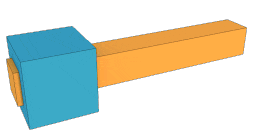
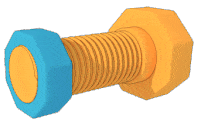
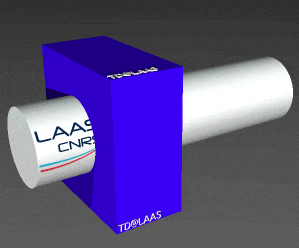
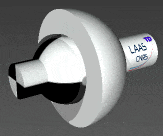
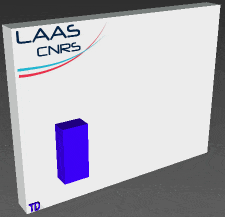

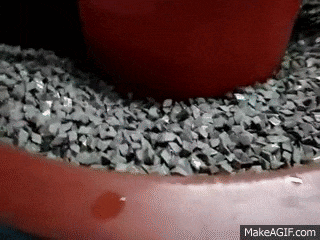
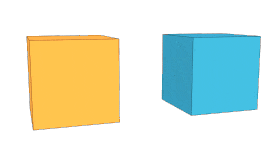
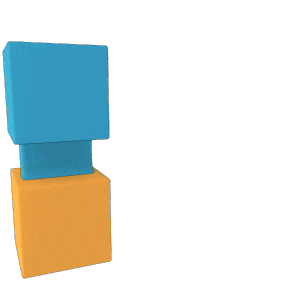



Comments